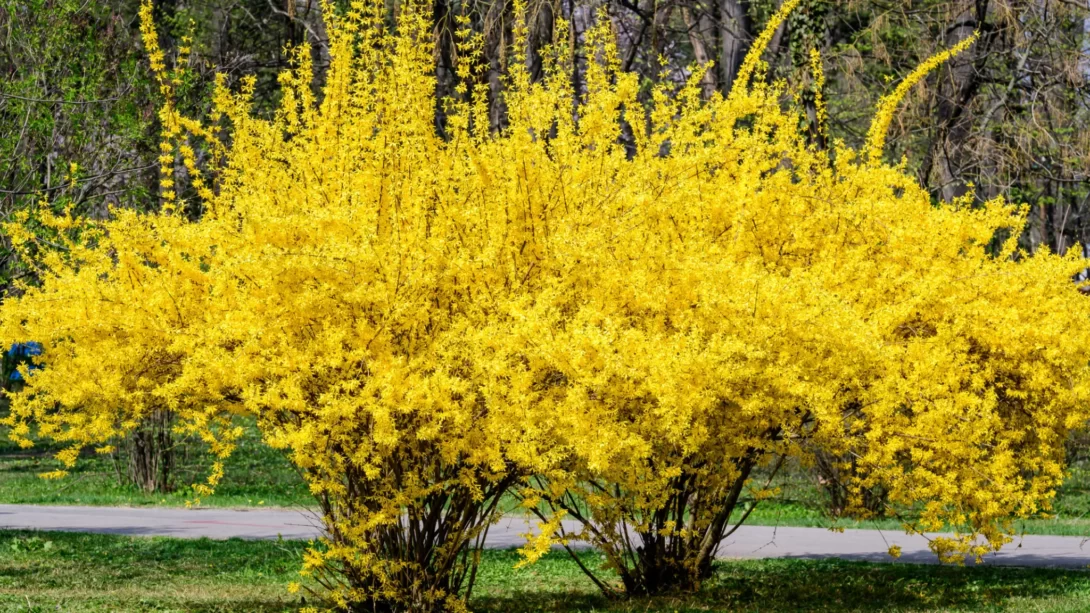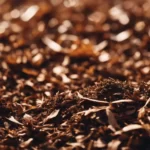Forsythia, with its bright yellow blooms signaling the arrival of spring, is a popular choice in many gardens. However, gardeners often face the challenge of protecting their plants from wildlife, particularly deer. Understanding the eating habits of deer is crucial for those looking to maintain the integrity of their forsythia shrubs. This article explores the relationship between deer and forsythia, providing valuable insights for gardeners.
Forsythia Overview
Forsythia is known for its vibrant yellow flowers that appear in early spring, often before the leaves. This deciduous shrub can vary in size, with some varieties reaching up to 8-10 feet tall. Forsythia is commonly used for borders, privacy screens, and as a standalone ornamental feature in gardens. Its early blooming makes it a valuable plant for adding color to the landscape after winter. Understanding its place in the garden ecosystem is important when considering its interactions with local wildlife, such as deer.
Deer Feeding Behavior
Deer are herbivorous animals with a diet that changes with the seasons. In the spring and summer, they typically consume a variety of green plants, including leaves, stems, flowers, and grasses. As fall approaches, deer shift their diet to more woody plants, nuts, and fruits to store fat for the winter. Their feeding habits are influenced by food availability and environmental conditions, making them adaptable to different habitats. This adaptability is key to understanding why deer may or may not target certain plants, including forsythia, in a garden setting.
Deer and Forsythia: A Relationship Analysis
The question of whether deer eat forsythia is not straightforward. Generally, forsythia is not considered a top choice for deer, particularly when other more preferred food sources are available. However, deer are known for their adaptability in feeding habits, especially in environments where their preferred foods are scarce. In such cases, deer may resort to eating plants they would typically ignore, including forsythia.
The likelihood of deer feeding on forsythia also varies depending on the local deer population and their familiarity with available food sources. In areas with high deer pressure and limited food options, forsythia may be more at risk of being browsed.
Forsythia’s Appeal to Deer
While forsythia is not among the most favored plants for deer, certain characteristics might still attract them. Young forsythia plants with tender leaves and shoots can be more appealing to deer, especially in early spring when other food sources are not yet abundant. Additionally, the location of forsythia in the garden can influence its vulnerability; plants situated along the edges of properties or near natural deer habitats are more likely to be browsed.
Comparatively, forsythia is less attractive to deer than many other garden plants. Plants with high moisture content, nutritional value, and soft foliage are typically more appealing to deer. Since forsythia is a hardier shrub with a slightly woody structure, it doesn’t fit the profile of preferred deer snacks.
Protecting Forsythia from Deer
Gardeners who cherish their forsythia and wish to protect them from deer have several options. Utilizing deer repellents can be an effective way to deter deer. These repellents use unpleasant scents or tastes to discourage deer from feeding on treated plants. It’s important to apply these repellents regularly, especially after rain, to maintain their effectiveness.
Additional Strategies for Protecting Forsythia from Deer
Beyond repellents, there are more permanent solutions to protect forsythia from deer. Physical barriers, such as fencing, can be highly effective. A fence should be tall enough, typically around 8 feet, to prevent deer from jumping over. For a less intrusive option, individual mesh guards or netting can be placed around each forsythia plant, especially during vulnerable growth stages.
Alternative landscaping techniques can also play a role in deterring deer. Designing your garden layout to make it less accessible to deer, such as placing forsythia closer to the house or in enclosed areas, can reduce the likelihood of deer browsing. Using raised beds or terracing can also be effective, as deer tend to avoid areas that require additional effort to access.
Tips for Planting Deer-Resistant Companion Plants
Incorporating deer-resistant plants into your garden can also help protect your forsythia. These plants either have a texture, taste, or scent that deer find unappealing. Some examples include lavender, Russian sage, and boxwood. Planting these around or near your forsythia can create a natural barrier, deterring deer from getting too close. Not only does this method provide protection, but it also adds diversity and beauty to your garden.
Conclusion
While forsythia is not a primary target for deer, it can occasionally fall victim to their browsing, especially in areas with high deer populations or limited food sources. Understanding deer behavior and their preferences helps in devising effective strategies to protect these vibrant shrubs. By combining repellents, physical barriers, strategic garden design, and companion planting, gardeners can effectively safeguard their forsythia without compromising the natural beauty of their landscape.
In conclusion, with a little planning and the right approach, it’s entirely possible to enjoy the stunning blooms of forsythia while coexisting peacefully with local wildlife. Implementing these strategies not only preserves the integrity of your garden but also contributes to a harmonious balance between cultivated landscapes and the natural ecosystem.



